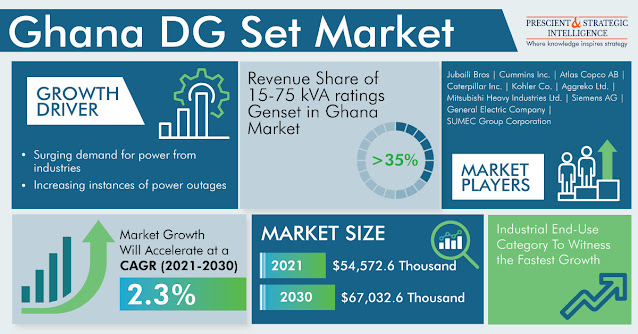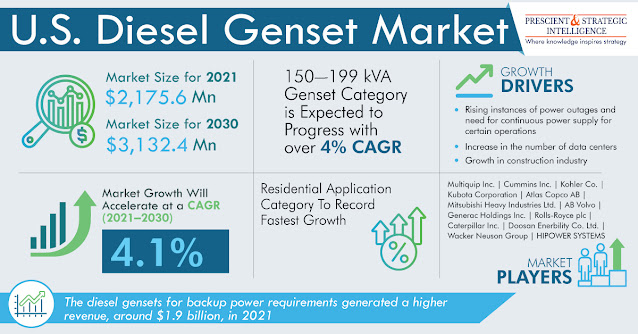In 2021, the Thailand DG set market was valued at $158.3 million; it is expected to reach $236.9 million by 2030, advancing with a rate of 4.6% from 2021 to 2030. It is attributed to the growing demand for backup and standalone power sources in offices, hospitals, hotels and residential buildings. Thailand is a popular tourist attraction around the globe. The Thailand tourism industry contributes significantly to the GDP of the country. The hospitality sector is expected to grow, attributed to the numerous business opportunities generated by the rise in tourism activities in-country.
The infrastructure development projects such as the construction or renovation of hotels and resorts are driving the demand for diesel generators leading to Thailand DG set market expansion. Moreover, the surge in demand for power generation systems on islands that do not have grid connectivity or managing with unreliable connections drives the market. For example, there is no central source of electricity in Phaluai island. Therefore, the natives are dependent on small-diesel-fueled generators.
The DG sets with a capacity above 750 kVA captured the largest share of the Thailand DG set market over the last few years, and their sales value is expected to grow at a rate of 4% from 2021 to 2030. It is attributed to high power requirements in the industrial sector for operations. The manufacturing companies in Thailand are massively producing high-tech goods such as automobiles and electronics. There are numerous start-ups in the country focusing on expanding their production facilities, driving the demand for gensets.
The significant Thailand DG market share is captured by the commercial sector under the application segment, amounting to 40%. The surge in leisure facilities such as shopping complexes, hotels and restaurants leads to the expansion of the commercial sector. The rise in Thailand’s tourism is also a key reason for the flourished commercial sector. The governments and real estate companies are making investments in the residential sector. It will further complement the growth of the commercial sector as well, driving the need for urban and semi-urban accommodations, resulting in a surge of residential DG sets demand.
The public and public-private partnerships led investments in the infrastructure development projects in the country to drive the Thailand DG set market. The government has invested around $116 billion in the last 10 years for infrastructure development projects. According to World Bank, the PPP investments in infrastructure in the previous 20 years amounted to $28 billion as per the database of private participation in infrastructure. The housing sector captured a significant share of the investment.
The Thailand DG set market is expected to boom due to the rising competition among providers in the country. The new companies in the market are partnering with other companies, resulting in tough competition. The DG sets manufacturing companies focusing on implementing technological advancements in the products to advance their position in the market. For instance, Caterpillar Inc. launched 31 new CAT GC DG sets’ models for the global electric contractor market.
Thus, the rise in infrastructure development activities and expansion of the hospitality sector due to surge in the tourism activities leads to increased demand for DG sets.





.jpg)












